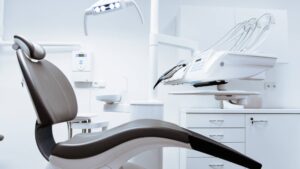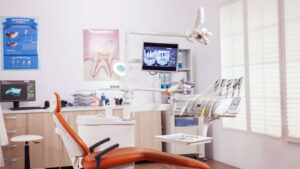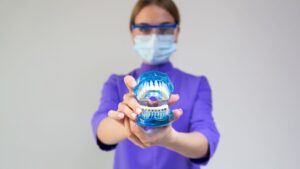When I first stepped into a dental clinic in North York for a routine check-up, I was blown away by how different the experience was from what I remembered. Gone were the days of cumbersome X-rays and uncomfortable moulds.
Instead, I was greeted by sleek digital screens, advanced scanners, and a sense of comfort that was almost unheard of in the past. I left not only with a clean bill of health but with a renewed appreciation for how technology has changed the way we care for our teeth.
Technology is rapidly reshaping the landscape of modern dentistry. Whether you’re sitting in the dentist’s chair or preparing for your next cleaning, it’s likely you’ll experience a host of technological advancements designed to make dental care faster, more precise, and—let’s be honest—far less intimidating.
Here’s a breakdown of how technology is impacting diagnostics, treatment procedures, patient experiences, and more.
How Has Technology Enhanced Diagnostic Capabilities in Dentistry?

When it comes to dental care, the sooner a problem is detected, the better. That’s where modern technology plays a pivotal role in early diagnosis and treatment.
Digital imaging has completely replaced traditional X-rays, offering clearer images while reducing radiation exposure—a major win for patient safety. But that’s just the beginning.
Cone-Beam CT (CBCT)
Cone-Beam CT (CBCT) is a game-changer, providing 3D imaging for a more precise evaluation of complex dental issues like root canals or implant placements.
The 3D view helps dentists see things that might have been missed with traditional 2D imaging, allowing for better treatment planning.
Imagine walking into a dentist’s office, having your scan done in minutes, and getting a complete, accurate picture of your oral health in 3D.
Intraoral Cameras
Another breakthrough is intraoral cameras. These tiny devices let your dentist capture high-resolution images of your mouth.
Not only do they make diagnosing cavities, gum disease, or fractures quicker, but they also provide you with a visual aid, so you can see what’s going on inside your mouth too.
It’s like bringing transparency into the process—literally!
How Are Treatment Procedures Becoming More Efficient and Precise?

The days of waiting weeks for dental crowns or having to schedule multiple appointments for a single restoration are long gone.
CAD/CAM Technology
With CAD/CAM technology, dental clinics can now create customized crowns, bridges, and veneers right in the office.
The process is streamlined: the dentist takes a digital scan of your teeth, designs the restoration on a computer, and then uses a milling machine to create it—all in one visit.
This means no more temporary restorations and no more second trips to the office. How cool is that?
Laser Dentistry
Another treatment innovation comes in the form of laser dentistry. This technique uses lasers to perform tasks like reshaping gums, removing decay, or even whitening teeth—all with minimal discomfort.
The beauty of laser procedures is that they’re minimally invasive, reducing bleeding and swelling.
Plus, recovery time is faster. So not only do you get your procedure done quicker, but you’ll also spend less time healing. What’s not to love?
Robotics
Lastly, robotics in dental implantology is the latest frontier in dental care. Robotic systems guide the dentist with extreme precision during implant placement, ensuring that the surgery is carried out with minimal error.
These systems use real-time data to assist the dentist and even provide haptic feedback, which adds an extra layer of precision. It’s the kind of technology that brings peace of mind, knowing that everything is being done to ensure the best possible outcome.
How Is Technology Enhancing the Patient Experience in Modern Dentistry?

Visiting the dentist can be nerve-wracking for many, but technology has made the experience much more comfortable and accessible.
Teledentistry
Take teledentistry, for example. This technology enables virtual consultations and follow-ups, especially for those who have difficulty getting to the dentist’s office. Whether you’re in a remote area or just too busy to leave the house, teledentistry allows you to check in with your dentist, get advice, and even have minor issues diagnosed—all from the comfort of your home.
Patient Portals
Another impressive advancement is the use of patient portals. These platforms let you schedule appointments, access your dental records, and even communicate with your dentist—all online. It’s like having a personal assistant for your oral health. And the best part? You have complete control over your schedule and care.
Virtual And Augmented Reality(VR/AR)
But it’s not just about convenience—it’s also about comfort. Virtual and augmented reality (VR/AR) are making strides in helping patients feel at ease during treatments.
Some dentists are using VR to distract patients during procedures, while others are using AR to show patients how certain treatments will look. It’s an immersive, interactive way to educate and calm patients at the same time.
How Can These Technological Advancements Benefit Your Dental Care Routine?

Now that we’ve seen how technology is revolutionizing dental practices, the real question is: how can you take advantage of these advancements? Here are a few practical tips to get the most out of modern dental care:
- Look for a dental clinic in North York that utilises digital tools. Ask your dentist about their use of digital X-rays, intraoral cameras, and 3D imaging. These technologies offer faster, more accurate diagnoses and can help catch issues earlier, which is always better for your long-term health.
- Consider laser treatments for minimal discomfort. If you’ve been avoiding dental procedures due to pain concerns, ask about laser options. Whether it’s for cavity removal or gum reshaping, laser dentistry is an excellent way to ensure a comfortable experience.
- Don’t be afraid to ask about teledentistry. If you’re struggling to find the time to visit your dentist or live in an area with limited access, check if your dentist offers virtual consultations. It’s an easy and convenient way to keep up with your oral health.
- Take advantage of patient portals for better engagement. With online portals, you can keep track of appointments, dental records, and communication all in one place. It helps you stay proactive about your dental health!
FAQ: Common Questions About Technology in Modern Dentistry
1. How do digital X-rays compare to traditional X-rays?
Digital X-rays provide clearer images with less radiation exposure. They’re faster to process and allow for more detailed views, making diagnosis easier and quicker. Plus, the reduced radiation is a big benefit for patient safety.
2. Can laser treatments be used for all dental procedures?
While lasers are incredibly versatile, they’re not suitable for every dental procedure. They work best for gum reshaping, cavity removal, and teeth whitening. Your dentist will recommend the most appropriate treatment based on your specific needs.
3. Is teledentistry as effective as in-person visits?
Teledentistry can be highly effective for consultations, follow-ups, and minor issues. However, for more complex treatments, an in-person visit is still necessary. It’s an excellent tool for those who need convenience or live far away.
4. How do AI and robotics improve dental procedures?
AI helps in diagnosing conditions early, predicting treatment outcomes, and enhancing precision in procedures. Robotics take it further by guiding dentists during complex surgeries, ensuring accuracy and reducing the chance for error.
Wrapping Up: The Future of Dentistry Is Bright!
The future of dentistry is not only high-tech but also more patient-friendly than ever. From improved diagnostics to more efficient treatments, technology is making dental care easier, faster, and more comfortable.
So, the next time you visit your dental clinic in North York, remember that you’re not just getting a cleaning or filling—you’re experiencing the future of dental care.
Tip for the road: Stay informed about new dental technologies, and don’t hesitate to ask your dentist how these advancements can improve your care. After all, your smile deserves the best!
